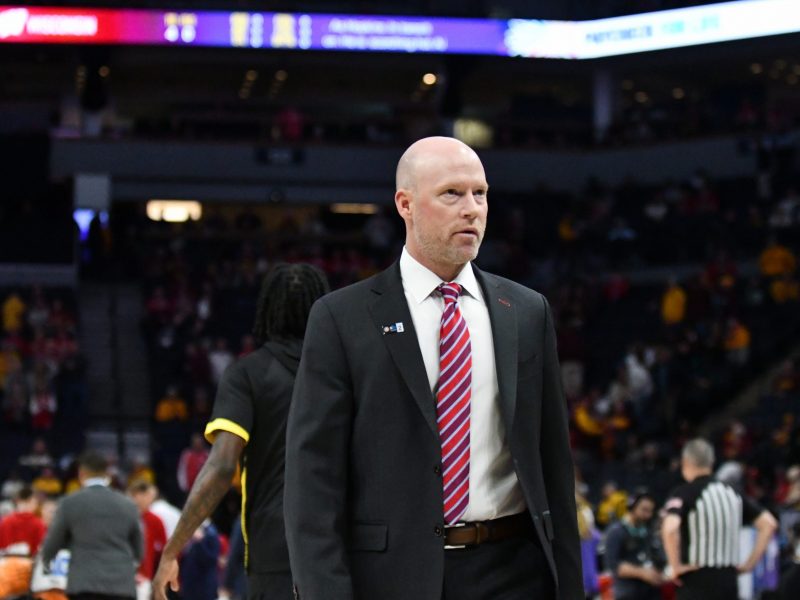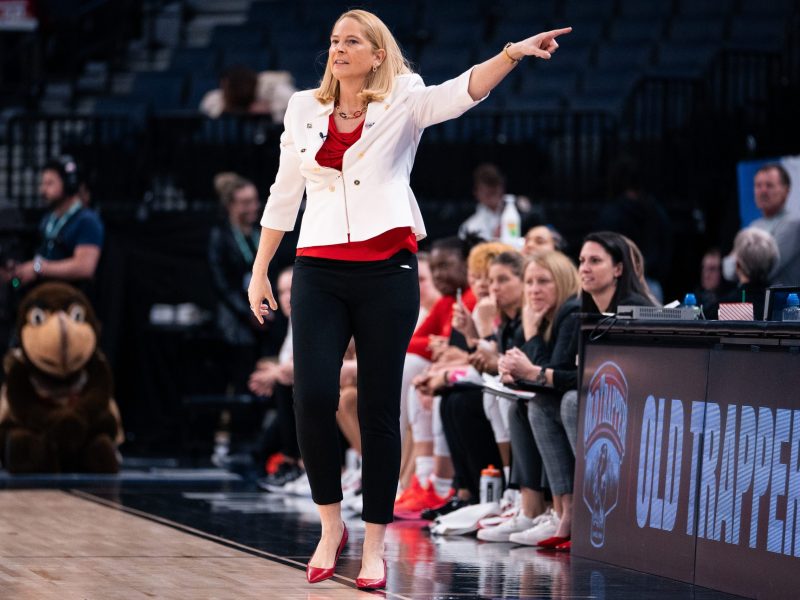In his words, Kevin Willard screwed up Donta Scott early this season.
The Maryland coach asked Scott to move from power forward and take on a new set of responsibilities at small forward. But with limited time to prepare in the role due to injuries in the Terps’ preseason and several new players in the rotation, Scott struggled early on.
The fifth-year senior averaged just 8.5 points per game through the Terps’ first 10 contests and made defensive blunders as Maryland struggled early.
But as the season progressed, Scott made a jump on both sides of the ball. Similarly, his teammates have also improved and slowly developed into one of the nation’s top defenses, on display in a commanding win on Saturday.
Maryland men’s basketball beat Nebraska — a team that was 15-5 entering the game, upset then-No. 1 Purdue earlier this season and beat No. 6 Wisconsin on Friday — by 22 points. The Terps held the Cornhuskers to 51 points, their lowest output of the year and Maryland’s fewest points allowed this season.
With the sixth-best defense in the country, per KenPom’s adjusted defensive efficiency, the Terps feel like they’ve found their identity. After heavy roster turnover and early-season struggles, new and returning players are starting to fit into their new roles to the team’s benefit — Maryland is 4-2 in its last six games.
“I just feel like we’re just so talented and gifted defensively as a unit one through five,” Jahmir Young said. “For us to be able to rely on our defense sometimes and for us to be ranked up top in the country defensively means a lot for our group and shows us who we are.”
[Maryland men’s basketball’s bench boosts the Terps to 71-53 win over Nebraska]
The Terps lost scoring, shooting and key rotation pieces with Don Carey’s graduation and Hakim Hart and Ian Martinez’s transfers. Last year, the trio combined to make up 35.1 percent of Maryland’s points and 52.8 percent of its three-pointers.
They held the Terps’ three best three-point percentages of players who recorded more than 25 attempts last season.
“With some of the pieces we added we got much tougher than we did last year, we lost some shooting, lost some skills in certain positions, but we added some toughness,” Willard said. “It just took this team a while to kind of figure out what was the one thing that they’re going to be able to rely on game in, game out.”
With heavy turnover in the rotation, Willard depended on players like Scott to take on a new role and relied heavily on freshmen DeShawn Harris-Smith and Jamie Kaiser Jr., as well as Indiana transfer Jordan Geronimo. It was to the Terps’ detriment in November, as they started the season 1-3 for the first time since 2000.
Scott initially struggled to adapt on both sides of the ball after his position change. Willard said there was confusion relating to his offensive and defensive duties early in the year due to different responsibilities in each role, and limited preparation at the new position in preseason due to injuries to other players.
“That was a lot for a fifth-year guy that had to try to transition,” Willard said. “I think what you’re seeing now is Donta is very comfortable. He’s playing at a high level, both offensively and defensively, because he’s much more comfortable in what he’s doing. He’s playing much better — so that’s a long answer [for] I screwed him up earlier.”
[Maryland men’s basketball’s heralded freshmen got a bright moment in a challenging year]
Scott has grown into his new role, primarily a perimeter player at small forward. He averaged 13.4 points on 42.6 percent shooting from behind the arc in his last 11 games — a key reason for Maryland’s offensive improvement over the course of the season.
The Terps’ key freshmen have also improved after slow starts.
Kaiser and Harris-Smith combined for 23 points against the Cornhuskers and have become key parts of the Terps’ suffocating defense — a promising sign for their development and Maryland’s future.
“I kind of knew we were going to struggle early just because I knew we’re gonna have to rely on [the freshmen] a lot,” Willard said. “They are talented, they are good. And they are going to be really, really good. But this era of college basketball … it’s unfair to every freshman coming in because they’re just going up against guys that understand the game, are stronger, are older.”
Saturday’s comprehensive victory over Nebraska showcased Maryland’s improvement this season and was a sign that the Terps’ pieces are starting to fall into place around their leading scorers in Young and Julian Reese.
Maryland’s November losses, especially its defeats to UAB and Davidson at the Asheville Championship, did a lot of damage to its resume. But the Terps are a different team at the start of February, the halfway point of their Big Ten schedule. They’ll need to see continued improvement to keep any hopes of postseason play alive.
“We’re understanding now that [our defense is] our identity as a team, especially when shots aren’t falling. Early in the season we weren’t able to shoot as well, so we were able to fall back on our defense and depend on that,” Reese said. “I feel like if our defense stays this level with our continuing increase in shooting, we’ll be great.”



